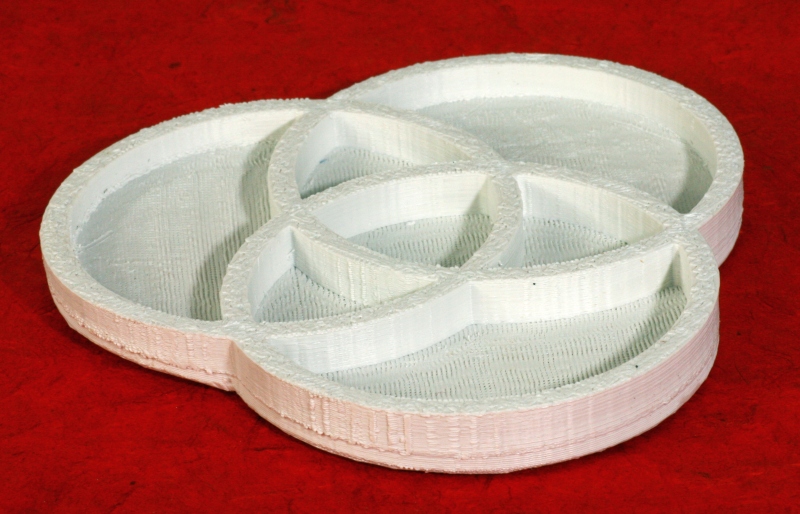
Below is a blurb for hands-on workshops I've been leading for high school and college math teachers. Typically I've done this either as a full day course or as three two-hour sessions, which is preferable as it allows time for homework and practice in between sessions. I have mainly been giving these workshops using Mathematica (but also related workshops using Maya). A site license or a trial version of the software would be needed for each participant to follow along. This can be done in a school computer lab or by having everyone bring their own laptop with the software pre-installed.
Software packages such as
Mathematica can translate algebraic expressions into 3D forms that
are then created as tangible, low-cost, plastic objects that
students can hold in their hands, take home, and/or pass around
the class. Workshop participants are given a series of
progressively more complex design challenges and are also asked to
come up with their own individual objects of interest to create.
Each class ends with something that has never existed before
printing on the 3D printer. These techniques empower teachers and
students to create physical versions of anything that can be
described mathematically with algebraic, trigonometric, and
Boolean functions. They introduce students to the creative side of
mathematics and provide a powerful motivation for learning the
details.
Participants will work through a series of design problems to
learn the techniques and build up their skills. Here is an example
of a Mathematica (version 10) notebook that resulted from
one recent series of three classes for secondary school teachers
at Math for America, but the details of what I cover vary
depending on the interest, background, and ability of the
participants:
A typical assignment is
to create a Venn-diagram candy dish, which can be made by
combining appropriately translated cylinders. If you can
write the equations, you can build one on an inexpensive 3D
printer:

For many more examples of the kinds of objects that can be created through mathematical design and current 3D printing technology, see my RP page and the pages it cites:
http://georgehart.com/rp/rp.html
Bio:
George Hart is a sculptor and applied mathematician who
demonstrates how mathematics is cool and creative in ways you
might not have expected. Whether he is slicing a bagel into two
linked halves or leading hundreds of participants in an intricate
geometric sculpture barn raising, he always finds original ways to
share the beauty of mathematical thinking. An
interdepartmental research professor at Stony Brook University, he
holds a B.S. in Mathematics and a Ph.D. in Electrical Engineering
and Computer Science from MIT. Hart is an organizer of the
annual Bridges Conference on mathematics and art and the editor
for sculpture for the Journal of Mathematics and the Arts. His
research explores innovative ways to use computer technology in
the design and fabrication of his artwork, which has been
exhibited widely around the world. Hart co-founded the Museum of
Mathematics in New York City and developed its initial set of
hands-on exhibits. He also makes videos that show the fun
and creative sides of mathematics. See http://georgehart.com
for examples of his work.